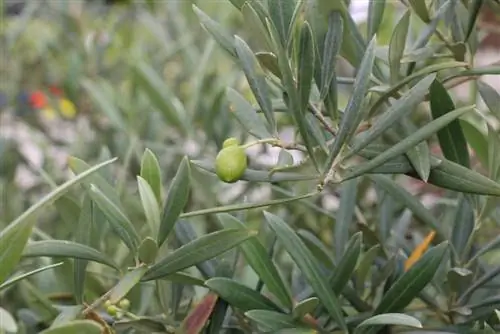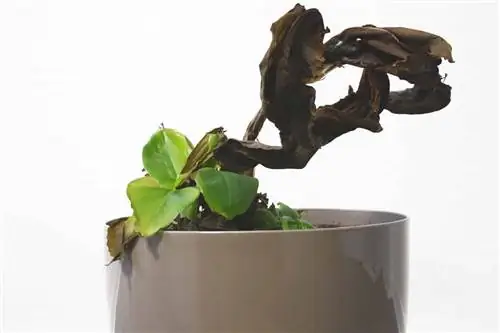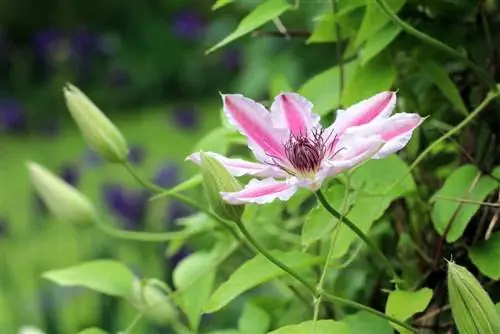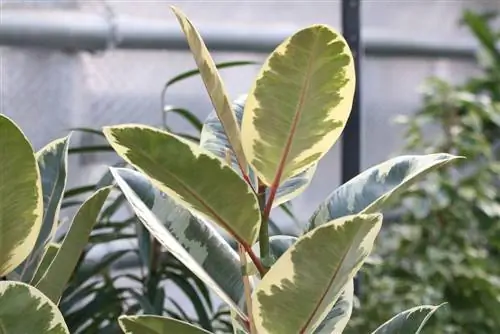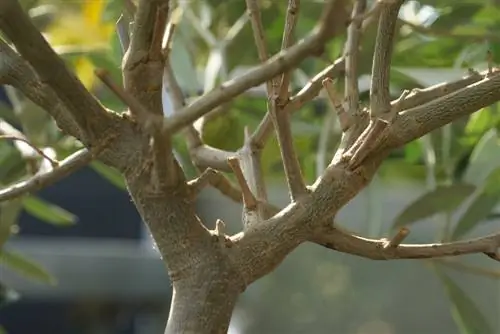- Author admin [email protected].
- Public 2023-12-17 03:39.
- Last modified 2025-01-24 12:45.
An olive tree in your own home or garden brings a Mediterranean flair with its silvery-gray leaves. The olive tree, Latin Olea auropaea, is one of the most undemanding potted plants. If the tree develops brown leaf tips, the cause must be found quickly so that serious damage does not occur. Errors in care are usually the cause. Therefore, the care measures must be checked.
It's all about the right swell
If the plant does not have enough nutrients, the tree will first show this at the tips of the leaves, which turn brown. Over-fertilization can also be the reason for brown leaf tips. Olive trees in pots often suffer from a nutrient deficiency. The fertilizer administered in liquid form is flushed out again. If there is a nutrient deficiency, you should counteract the deficiency with an appropriate fertilizer. A commercial citrus fertilizer is best suited for this.
Note:
From March to September you should fertilize your olive tree every two to three weeks. Always apply the fertilizer via the irrigation water.
If there is over-fertilization, proceed as follows:
- Removing the plant from the pot
- Free roots from the earth
- fill fresh substrate into pot
- Insert plant
- do not fertilize for the next few weeks
The right place
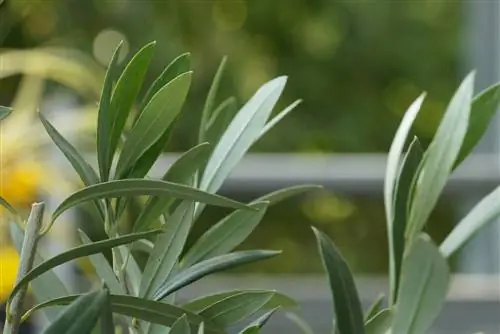
An incorrect choice of location can cause brown leaf tips on your tree. The tropical plant requires a place in full sun. Midday sun is no problem. A place on the south side in the garden or on the balcony is ideal.
The following rules will help you choose the right location:
- Removing or transplanting a plant from the shade
- choose a location in full sun
- Use a plant lamp if there is a lack of light in winter
- remove shade-producing plants or objects or transplant plants
A black pot can quickly cause the roots to overheat. The pot should be wrapped white. Covering the substrate with white balls protects the roots from too much heat.
Tip:
If the plant is too close to a pane of glass, the leaves can burn. Place the pot far away so that the leaves do not touch the glass pane.
Not too much water
The tree, which comes from tropical areas, does not cope well with dry periods. The roots of olive trees go deeper and can absorb moisture. Too much water causes waterlogging. The tree shows brown leaf tips. The result is root rot, which can also pass to the trunk.
If the soil of your plant is also wet on the surface, there is waterlogging. Waterlogging can also be recognized by the fact that there is water in the collecting plate.
If there is waterlogging, proceed as follows:
- Removing the plant from the pot
- Removing soil from roots
- remove rotten roots
- Let the root ball dry
- Clean the pot
- Mix the substrate with dry sand or gravel and add it to the pot
- Insert plant
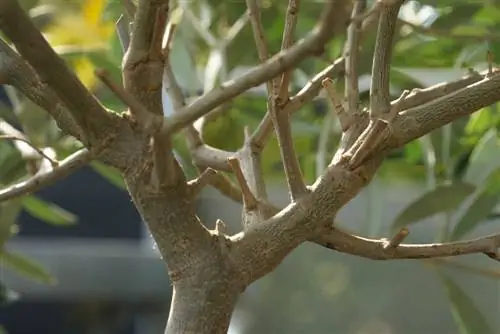
The tree should only be used again when the roots have dried sufficiently. The new planting should be done in a fresh and sufficiently drained substrate.
The right watering
Don't water your olive tree too often. When watering you should follow the following rules:
- only water when the soil on the surface has dried out
- Remove water from the collecting plate half an hour after watering
- If it rains heavily, move the plant to a rain-protected location
- do not use a plant pot without holes
- Mix sand or gravel into the soil
Roots that are too dry also occur, but very rarely. If this happens to you anyway, take the plant out of the pot and let the root ball stand in the water for a few minutes. Then put the plant back in the pot, in a fresh substrate.
The ideal winter quarters
If an olive tree is brought indoors at the beginning of winter, the tips of the leaves often become discolored. If there are only a few leaves, this is completely normal. If many leaves change color and fall off, the winter location must be checked. If your olive tree stays outdoors over winter, it should be covered with plant fleece. Brushwood mats are best suited for the trunk. A thick layer of mulch protects the roots from the cold. The tree can be watered on frost-free days. At our temperatures, overwintering in the garden is not recommended.
The following measures should be taken into account when choosing a location for the winter:
- sunny and warm location
- use plant lamps if necessary
- Protect from wind with translucent film during ventilation
- If the air humidity is low, set up a humidifier or a bowl of water
Be careful when pruning
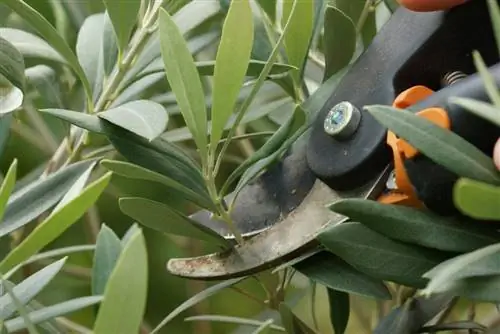
Brown leaf tips can also be a disease. Bacteria can easily penetrate if the trunk of the tree was damaged during pruning or was used with contaminated tools.
Tip:
When pruning, make sure that the trunk is not injured and work with clean, preferably disinfected tools.
If your tree is already infected with bacteria, remove the infected branches and twigs and protect the entry gate from further intruders. To do this, you can wrap the area with a cloth.
Avoiding waterlogging prevents fungal infestation
Fungals usually occur in connection with waterlogging. Mushrooms reproduce particularly well in a warm, humid environment. To eliminate waterlogging, proceed as described above. Waterlogging also occurs on outdoor olive trees in winter. Plant fleece is used here for winter protection, which often creates waterlogging. It is important that enough air can circulate under the fleece.
Tip:
A self-made wooden protective box that can be placed over the entire tree is best. Sufficient air can circulate here and there is no waterlogging.

